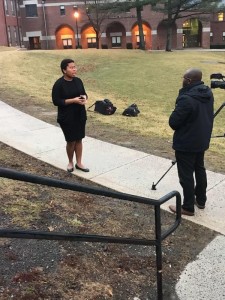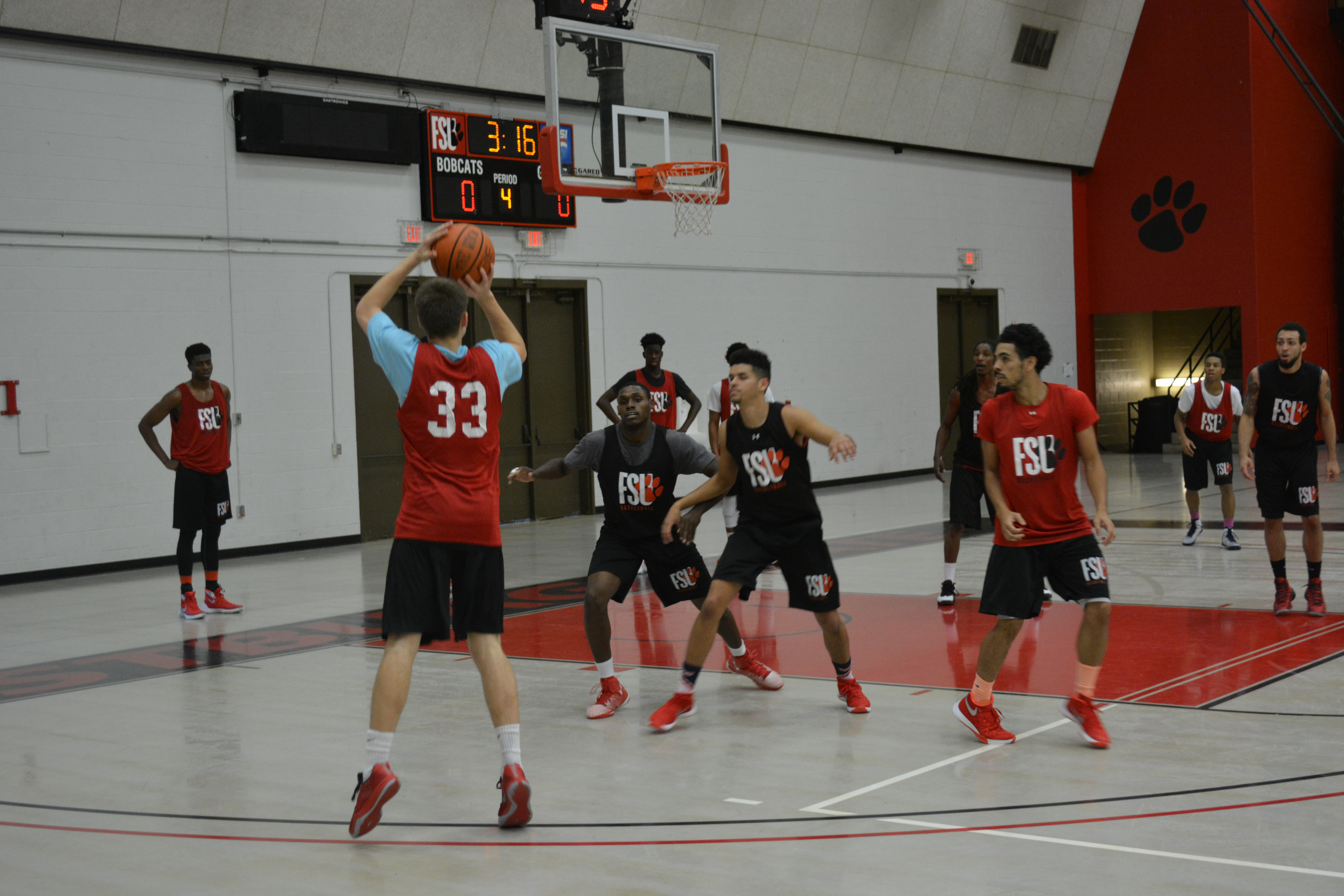Brownsville Memorial Approved on FSU Campus

On Feb. 22 between 5 and 6 p.m, students, faculty and descendants of Brownsville were interviewed by Jonathan Hunter from WDVM-Tv about the new monument being placed in the Upper Quad of Frostburg State University’s Campus to honor Brownsville, the once African American community, that resided in the area.
Brownsville was a community of African-Americans who built their own thriving neighborhood with resources in Frostburg, Maryland. Unfortunately, once the state wanted to expand the small college, that was held in Old Main, the community was asked to leave.
The first person interviewed by Hunter was Carmen B. Jackson, an in-law of a citizen of Brownsville, Raymond Jackson. Jackson came to the area 42 years ago; she remembers hearing a lot about the coal miner’s history in Frostburg. However, the African American people of Brownsville and their contributions were not mentioned. Shortly after she moved here, she met her father in-law, and this is when she discovered the history of Brownsville. “He would always tell me his heartbreak about being moved out of the house, so he stowed upon me his stories and his feelings,” Jackson stated. Jackson was appreciative of the University’s willingness to shed a light upon the hidden history of Brownsville. She ended her short interview by stating, “I think it’s a wonderful project thst is past due; we all know that history has not been kind, but the first step to healing is to acknowledge and accept.”
Next, Janet Jackson, the fourth child of Raymond Jackson, was interviewed. She was born and raised in the community once called Brownsville, on Park Avenue. Jackson is honored to have the memorial placed on campus. “I am happy that we are having this monument done to let people know that we were descendants on this campus before it became the University,” she said. She tells Hunter about some of the struggles growing up: “We moved to an all white neighborhood, and there was a petition signed that they did not want us in.” Only two families in the neighborhood refrained from signing the petition. After getting to know the Jackson family, the once skeptical families began to warm up to them. Jackson was a young child when she lived in Brownsville, so she was not aware of its name. Likewise, when her family was asked to leave, she just recalls doing what her parents asked of her. She remembers the move being hard on her parents.
“The people of this community have given a lot to make Frostburg State what is is,” President Ronald Nowaczyk stated. Because the members of Brownsville sacrificed their homes for the growth of the University, President Nowaczyk believes that the history should be highlighted in the region. He hopes that members of Brownsville are able to see what the campus is today, with all of its diversity and educational values. “It’s not one for us to be proud of in how it occurred, but I do think that we should recognize the contributions that were made by the citizens of Brownsville,” he stated. When he begin his position at FSU, he was not aware of the history of Brownsville, but moving forward he wants the students and faculty to know about the rich history.
Two students, Johana Gourdin and Kaitlyn Wharton, were interviewed. Gourdin expressed her pleasure with viewing the Brownsville project’s progression. “My involvement has always just been support of trying to raise awareness and trying to raise money to go towards getting this finally finished,” she informed Hunter. Gourdin has lived in the Upper-Quad for most of her college career, where Brownsville originally was. “When I heard there was a group of African Americans that originally lived here, it kind of gave me a sense of pride and purpose,” she exclaimed. Gourdin continued, “but to know that we have always been here and that this University wouldn’t be what it is without us; it kind of gave me a sense of purpose to stay in Frostburg.” She believes the project reflects well on the past, present, and future of the University.
The other student, Wharton, participated in creating the digital image of the monument. She explained the monument for the press: “There will be a large boulder that will be put into the ground two feet to establish a foundation; it will look like a prow of a ship on the side of a mountain.”
Many students and faculty members helped make this memorial possible. Dr. Amy Branam Armiento advised a lot of different projects and events surrounded around Brownsville.




